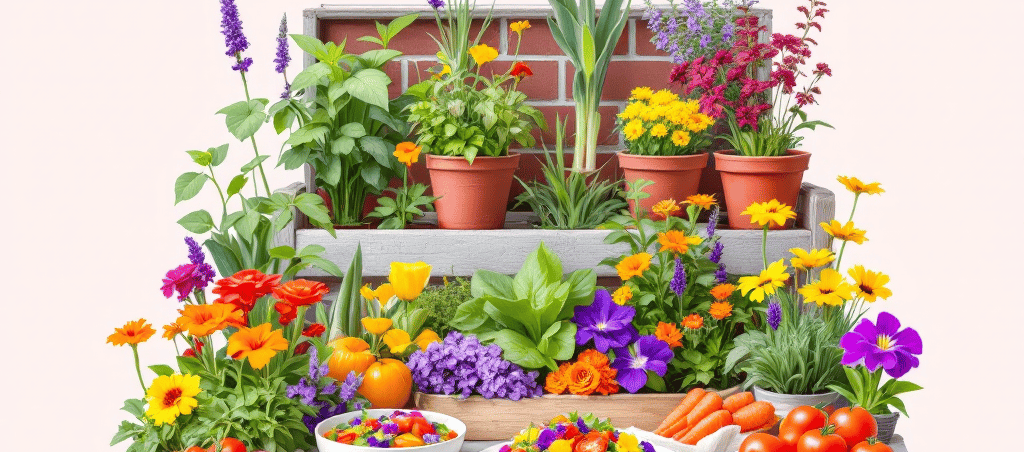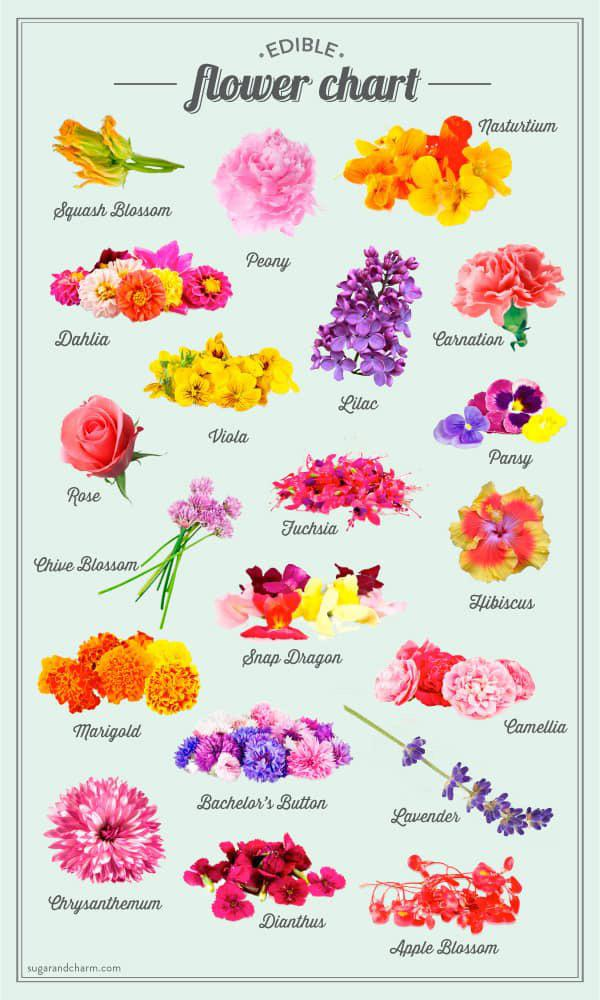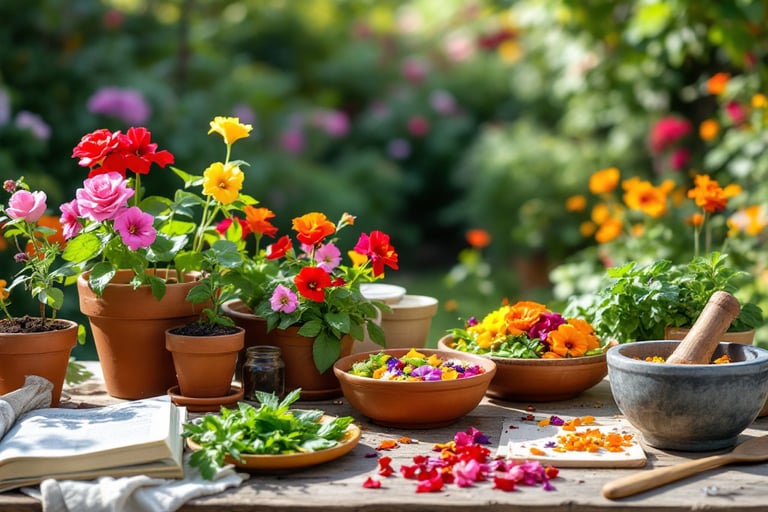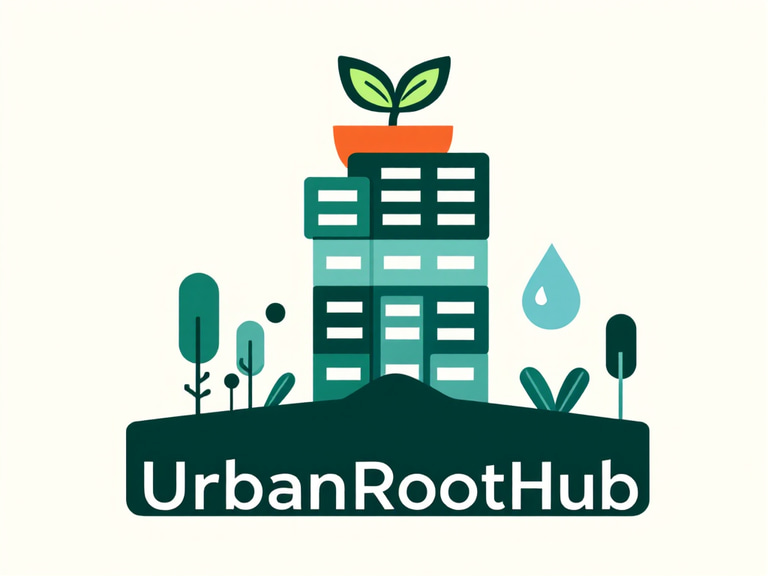Edible Flowers: Elevate Your Meals with These Home-Grown Blooms
Grow edible flowers at home to add flavor and beauty to your meals. Discover the best blooms, culinary uses, and safety tips for a delicious harvest.
Joel L.
2/27/20253 min read


Picture this: you’re hosting a dinner party, and as you set down a salad bursting with vibrant rose petals or a dessert adorned with delicate lavender buds, your guests gasp in delight. Edible flowers aren’t just a garnish—they’re a secret weapon for transforming meals into sensory experiences. Growing them at home means you’ll enjoy the freshest flavors, save money compared to store-bought options, and revel in the satisfaction of harvesting your own ingredients. Beyond practicality, there’s a quiet joy in nurturing these blooms, knowing they’ll soon grace your plate.
Edible flowers span cuisines and cultures—think peppery nasturtiums in a Mexican salsa, sweet violets in a French macaron, or fragrant jasmine in an Asian-inspired tea. They’re versatile enough for novice cooks yet sophisticated enough to impress seasoned foodies. In this guide, we’ll walk you through choosing the best flowers, growing them successfully, using them in creative recipes, and enjoying them safely. Whether your garden is a sprawling backyard or a sunny windowsill, you’re about to unlock a world of flavor and beauty. Let’s dig in!
Choosing the Right Flowers
The first step to a flourishing edible flower garden is picking blooms that suit your taste and space. Here are 10 favorites, each with distinct flavors and uses:
Roses (Rosa spp.): Sweet and slightly tart, rose petals shine in jams, salads, or homemade rosewater. Plant them with garlic to keep pests away.
Lavender (Lavandula spp.): With a floral, minty taste, lavender enhances honey, shortbread, or roasted lamb. English varieties are milder and beginner-friendly.
Pansies (Viola x wittrockiana): Mildly sweet and grassy, pansies are perfect for decorating cakes or tossing into salads. Their vivid colors make every dish pop.
Calendula (Calendula officinalis): Peppery and earthy, these golden petals mimic saffron in risottos or stews. They’re easy to grow and self-seed generously.
Chive Flowers (Allium schoenoprasum): Gently oniony, these purple puffs elevate eggs, soups, or dips. Pair them with carrots to repel pests.
Squash Blossoms (Cucurbita spp.): Sweet and vegetal, these golden flowers are ideal stuffed with cheese and fried. Harvest male blooms to sustain your squash crop.
Basil Flowers (Ocimum basilicum): Subtly herbal, these tiny blooms jazz up pestos or pizzas. Let a few plants flower while keeping others leafy.
Sage (Salvia officinalis) and Thyme (Thymus vulgaris) Flowers: Savory and woodsy, they’re great in stuffing or roasted veggies. Both thrive in dry conditions.
Nasturtium (Tropaeolum majus): Peppery and bold, nasturtiums spice up salads or garnish plates. Their leaves and seeds are edible too!
For more ideas, check out The Spruce’s Edible Flowers Guide at www.thespruce.com/edible-flowers-1403398. Match flowers to your climate—lavender loves heat, while pansies prefer cooler weather.




Keywords: growing edible flowers, edible flower gardening, soil for edible plants, natural pest control, watering edible flowers, rose care tips, lavender growing guide, home gardening for beginners.
Keywords: culinary uses of edible flowers, edible flower recipes, cooking with flowers, lavender honey, floral garnishes, baking with edible flowers, preserving edible blooms, nasturtium salads, candied violets.
Enjoy edible flowers worry-free with these tips:
Verify Edibility: Only eat known safe flowers—avoid toxic ones like daffodils. Check www.gardeners.com/how-to/edible-flowers/8078.html for a list.
Source Smart: Grow your own or buy organic—avoid pesticide-treated blooms from florists.
Clean Well: Soak in water with a splash of vinegar, rinse, and dry gently.
Test Allergies: Try a bit first, especially if you’re allergy-prone.
Prep Right: Remove bitter parts like rose bases or squash stamens.
Once, I nearly ate a toxic buttercup—double-checking saved the day! Keep kids and pets away from non-edible blooms.
Safety Precautions
Edible flowers blend gardening and cooking into one delightful hobby. From roses to nasturtiums, they’re easy to grow and fun to eat. Start with a pot or two, follow these tips, and soon you’ll be dazzling guests with floral-infused dishes. Grab some seeds and get planting—your meals are about to bloom!


